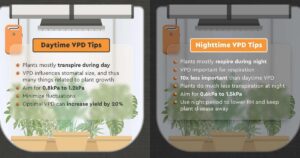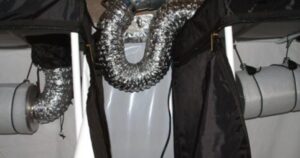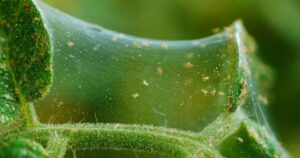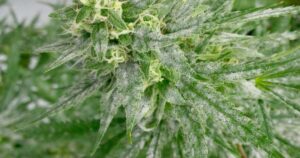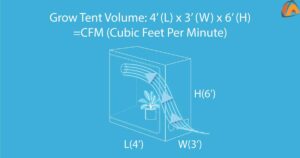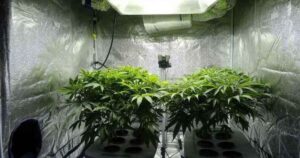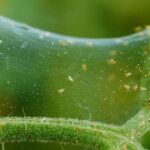Are you grappling with the aftermath of powdery mildew in your grow tent? Cleaning your grow tent after powdery mildew is the process of eliminating and preventing the recurrence of this fungal issue. It involves thorough sanitation to ensure a healthy growing environment for your plants.
Wondering how to embark on the journey of cleaning your grow tent after powdery mildew? Dive into our comprehensive guide that provides practical and effective steps to reclaim the health of your indoor garden. Discover the secrets to preventing future outbreaks and maintaining a pristine growing space.
In our upcoming article, we’ll delve into the specifics of cleaning your grow tent after powdery mildew infestation. From choosing the right cleaning agents to implementing proper ventilation, we’ve got you covered. Explore step-by-step instructions and valuable tips to ensure a successful cleanup.
Introduction to Powdery Mildew in Grow Tents
Growing your own plants in a controlled environment like a grow tent is an exciting venture, but it comes with its challenges. Powdery mildew, a common issue in such settings, can hinder your plant’s growth and overall health. This pesky fungus appears as a white, powdery substance on the leaves, affecting various plant species.
Don’t fret, though; understanding the causes, prevention, and treatment of powdery mildew is crucial for maintaining a healthy and thriving indoor garden. Stay tuned for practical tips and strategies to maintain a healthy indoor garden. Keep your plants thriving, and let’s tackle powdery mildew together!
Identification: Learn to recognize powdery mildew and its early signs on plant leaves.
Prevention: Explore proactive measures to minimize the risk of powdery mildew in grow tents.
Treatment: Discover effective strategies for addressing powdery mildew if it appears in your indoor garden.
Maintenance: Tips on creating and maintaining optimal conditions for plant health in grow tents.
Identifying and Removing Powdery Mildew Spores
In the pursuit of a healthy and thriving garden, understanding and addressing powdery mildew is crucial. Identifying and removing powdery mildew spores is a key step in ensuring the well-being of your plants. To effectively combat this common fungal issue, first, observe your plants for telltale signs such as white, powdery patches on leaves. Once identified, take swift action by pruning affected areas and providing proper air circulation.
Related Information: Preventive Measures Against Powdery Mildew
| Key Points |
|---|
| 1. Regularly inspect plants for powdery mildew signs |
| 2. Ensure proper air circulation in the garden |
| 3. Promptly prune affected areas |
| 4. Utilize organic fungicides or natural remedies |
| 5. Maintain a routine garden maintenance schedule |
Preventing powdery mildew is as crucial as addressing its presence. Implementing these preventive measures will fortify your plants against this common fungal threat, allowing your garden to thrive in optimal conditions.
Step-by-Step Guide for Cleaning Grow Tent Surfaces
Keeping your grow tent surfaces clean is crucial for maintaining a healthy and thriving indoor garden. Follow this simple step-by-step guide to ensure a pristine environment for your plants:
- Remove Plants and Equipment: Begin by relocating your plants and any equipment in the grow tent to a safe area. This will provide you with unrestricted access to the surfaces that need cleaning.
- Dust and Debris Removal: Use a soft brush or a handheld vacuum to gently remove dust and debris from the surfaces. Pay close attention to corners and crevices where particles tend to accumulate.
- Mild Detergent Solution: Prepare a mild detergent solution by mixing a small amount of gentle detergent with warm water. Dip a clean cloth or sponge into the solution and wipe down the surfaces, including walls and floors.
- Rinse with Water: After cleaning with the detergent solution, rinse the surfaces thoroughly with clean water. Ensure that all detergent residues are completely washed away.
- Disinfectant Application: To eliminate any potential pathogens or microbes, apply a suitable disinfectant to the surfaces. Follow the instructions on the disinfectant product carefully.
- Drying Time: Allow the grow tent surfaces to air-dry completely before reintroducing plants and equipment. Adequate drying prevents the growth of mold and mildew.
- Inspect for Damage: Take this opportunity to inspect the tent for any damages, such as tears or punctures. Repair any issues promptly to maintain an effective growing environment.
By incorporating these simple steps into your routine, you can ensure a clean and optimal space for your indoor garden to flourish.
Using Natural Remedies to Eradicate Powdery Mildew
This common fungal infection can mar the beauty of your plants, but fear not natural remedies are at your disposal. To combat powdery mildew, consider incorporating simple solutions such as neem oil, baking soda, or a milk spray. These household items, known for their antifungal properties, can be easily applied to afflicted plants, acting as a shield against the powdery menace.
Optimizing air circulation, ensuring proper spacing between plants, and maintaining a vigilant eye on humidity levels can further aid in prevention. Embracing a natural approach not only fosters a healthier environment but also promotes sustainability in gardening practices.
Below is a quick reference table highlighting key natural remedies for combating powdery mildew:
| Natural Remedy | Application Method | Additional Tips |
|---|---|---|
| Neem Oil | Dilute and spray | Apply in the evening for best results |
| Baking Soda | Mix with water | Reapply after rain or heavy watering |
| Milk Spray | Dilute with water | Use skim milk to avoid residue |
Implementing these remedies, along with good gardening practices, can help your plants thrive and bid farewell to powdery mildew naturally.
Disinfecting Grow Tent Equipment and Accessories
Maintaining a clean and hygienic environment is crucial when cultivating plants in a grow tent. To ensure the health and vitality of your plants, it’s essential to regularly disinfect grow tent equipment and accessories. Wiping down surfaces, such as trays, pots, and tools, with a mild disinfectant solution helps eliminate harmful pathogens that could jeopardize plant growth.
Cleaning and sterilizing equipment like pruning shears and scissors reduce the risk of spreading diseases among plants. Consider creating a simple cleaning schedule and using a checklist to ensure all items are thoroughly disinfected. A clean grow tent after hermie and powdery mildew not only promotes optimal plant growth but also safeguards your investment in gardening. Keep your plants thriving by incorporating regular equipment disinfection into your gardening routine.
Preventing Future Powdery Mildew Outbreaks in Grow Tents
To safeguard your plants and cultivate a thriving indoor garden, it’s crucial to implement effective prevention strategies. Maintaining optimal humidity levels, ensuring proper air circulation, and regularly inspecting plants for early signs of mildew are key measures. Consider using natural fungicides or exploring alternative plant varieties that are more resistant to powdery mildew.
Creating a preventative routine, incorporating these practices, will not only protect your plants but also contribute to a healthier and more fruitful growing environment. Stay vigilant, and your indoor garden will flourish without succumbing to the pesky powdery mildew.
Maintenance Tips for a Clean and Healthy Grow Environment

